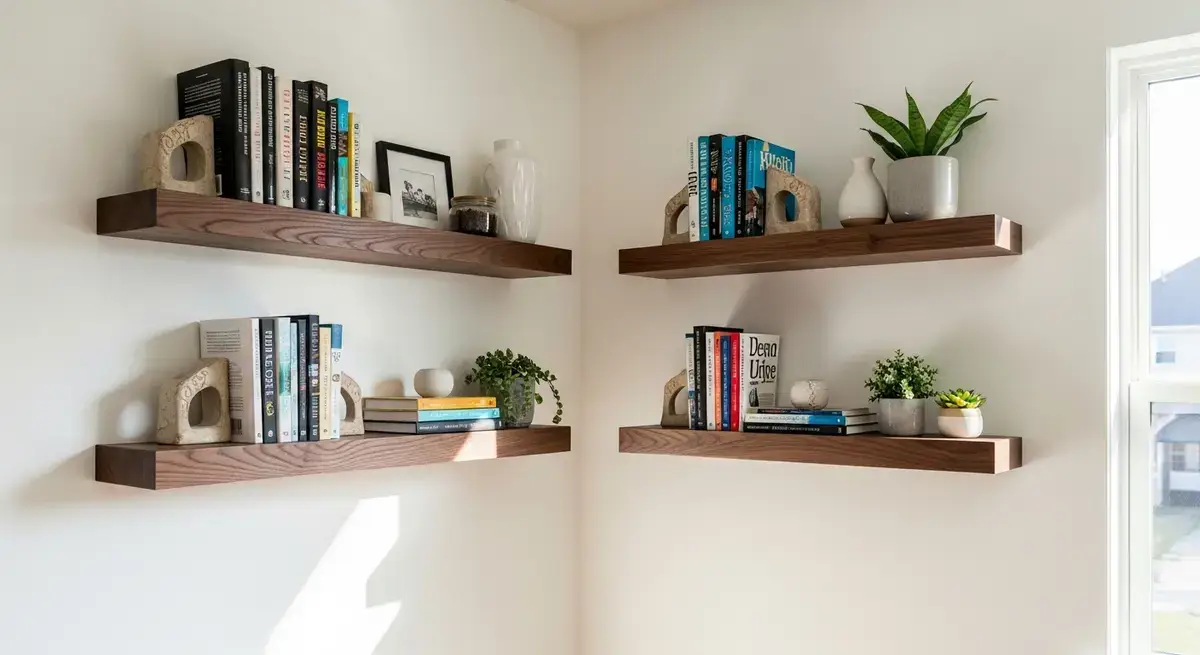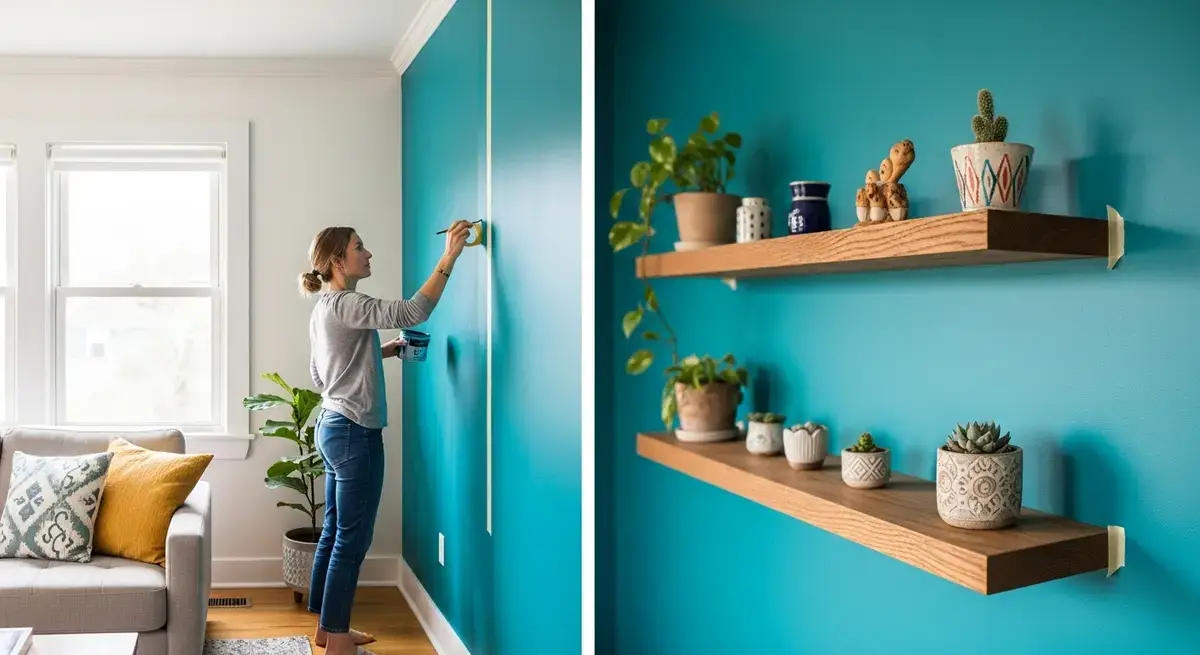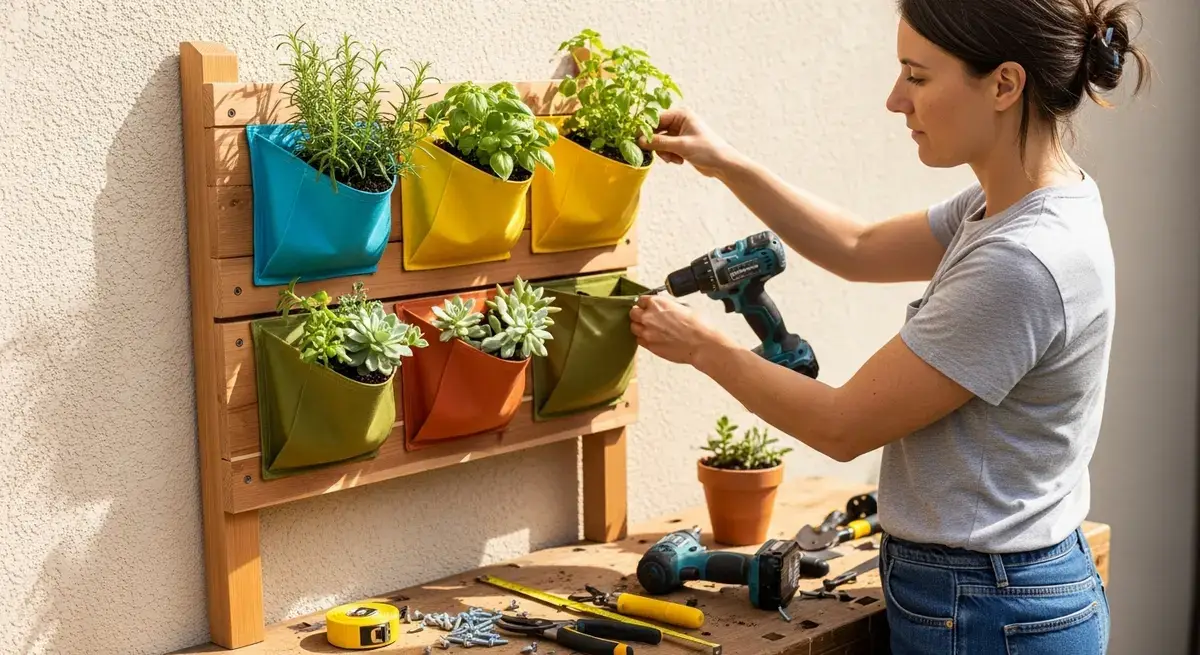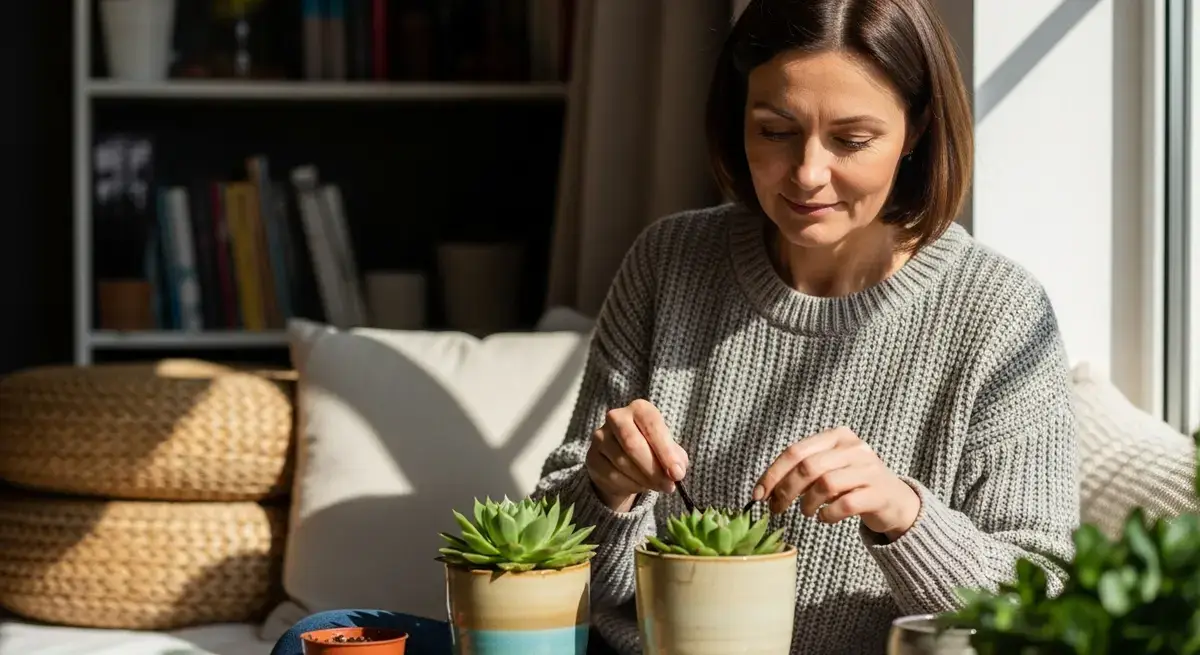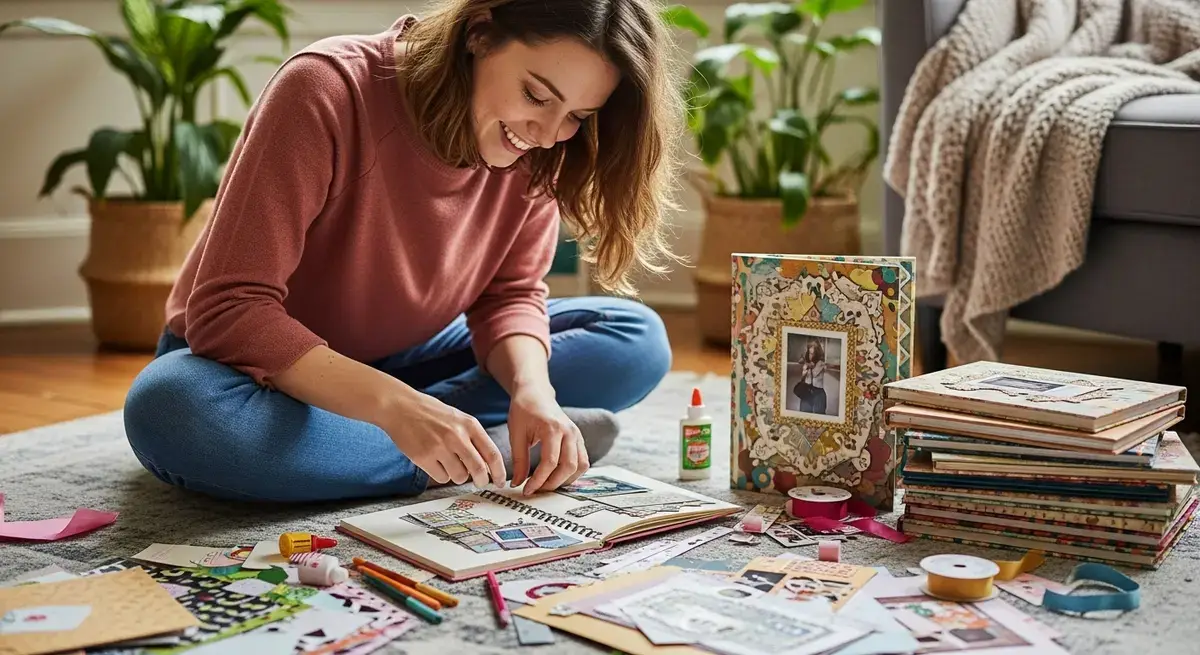Written by
Laura Hayes
Published
8/25/2024
Craft Your Own Stylish Floating Bookshelves to Elevate Any Room
Floating bookshelves offer a sleek, elegant way to showcase your favorite reads and decor while keeping your space organized. If you’ve ever wanted to add a modern touch to your home, building your own floating shelves is a rewarding project that combines style with practicality. Whether you’re a seasoned DIY enthusiast or just starting out, this guide will walk you through everything you need to know to create beautiful, sturdy floating bookshelves that transform your space.
What Makes Floating Bookshelves So Special?
The Magic Behind Floating Bookshelves
Floating bookshelves seem to magically "float" on your wall without any visible supports, creating a clean, contemporary look. They’re perfect for modern interiors and offer a smart way to save space while enhancing your room’s decor. Beyond their visual appeal, floating shelves keep your area clutter-free and open, making any room feel larger and more inviting.
Why Take the DIY Route?
Building your own floating shelves comes with some fantastic perks:
- Tailored to Your Style: Choose the perfect materials, size, and weight capacity that fit your needs and aesthetic.
- Save Money: DIY shelves are often far more affordable than pre-made ones, which can be pricey.
- Personal Fulfillment: There’s a special kind of pride in crafting something yourself—especially a project that highlights your love for books and design.
Gather These Essential Materials and Tools
What You’ll Need
Materials:
- Wood Options: Southern Yellow Pine is a popular and budget-friendly choice. For a richer, premium look, walnut from local suppliers like J Thomas Home Goods is an excellent option.
- Hardware: Oak dowels and wood screws are essential for sturdy assembly—look for affordable sources to keep costs down.
- Finishing Touches: Stain and polyurethane will protect your shelves and give them a polished, lasting finish.
Tools:
- Tape measure, painter’s tape, laser level, stud finder, and drills are must-haves.
- Bonus: Having two ladders handy can make the installation process safer and smoother.
Budgeting Tips for Your Project
Knowing your budget upfront sets you up for success. Basic floating shelves might cost around $10 in materials, while custom high-end versions can reach $3,000. By choosing to DIY, you can save a significant amount without compromising on style or quality.
Step-by-Step Guide to Installing Your Floating Shelves
Plan Like a Pro
Decide how many shelves you want and space them about 11 to 17 inches apart for a balanced look. Keep in mind weight distribution: heavier books should go toward the back to keep shelves stable and secure.
Installation Made Simple
-
Prepare the Wall:
- Mark your installation spots and locate studs using a stud finder to ensure your shelves are securely anchored.
-
Assemble the Shelves:
- Cut dowels to size and assemble your shelves, making sure to create precise cuts that will support weight effectively.
- Conceal hardware to maintain that signature floating appearance.
-
Mount the Shelves:
- Follow careful mounting steps to guarantee your shelves stay put. Be mindful not to overload them—keeping weight under 80 pounds helps avoid damage to your walls.
-
Add the Finishing Touches:
- Apply pre-stain conditioner, gel stain, and protective polyurethane to make your shelves both beautiful and durable.
Keep Your Floating Shelves Safe and Looking Fresh
Safety First
Always stick to recommended weight limits to avoid accidents—generally, keeping shelves under 80 pounds is safest. Check your shelves periodically to catch any signs of wear or instability early.
Easy Maintenance Tips
A little routine cleaning and inspection go a long way in preserving your shelves’ charm and function. Wipe them down regularly and look for any loose fittings to ensure they stay sturdy for years.
Creative Ways to Style and Use Your Floating Bookshelves
Make Your Shelves a Visual Highlight
Arrange books alongside decorative items like plants, framed photos, or unique trinkets to add personality and depth. Floating shelves can brighten up any room, from cozy living areas to playful children’s rooms.
Boost Storage and Style
Pair your floating shelves with smart storage solutions like IKEA’s Ivar cabinets for a seamless blend of fashion and function. This combo maximizes space while keeping your home stylishly organized.
Building your own floating bookshelves not only enhances your home’s decor but also brings the satisfaction of a hands-on project completed with care. Dive into this DIY adventure and watch your space transform with every shelf you install.
We’d love to hear about your own DIY floating shelf projects or answer any questions you have—drop a comment and share your experience!

